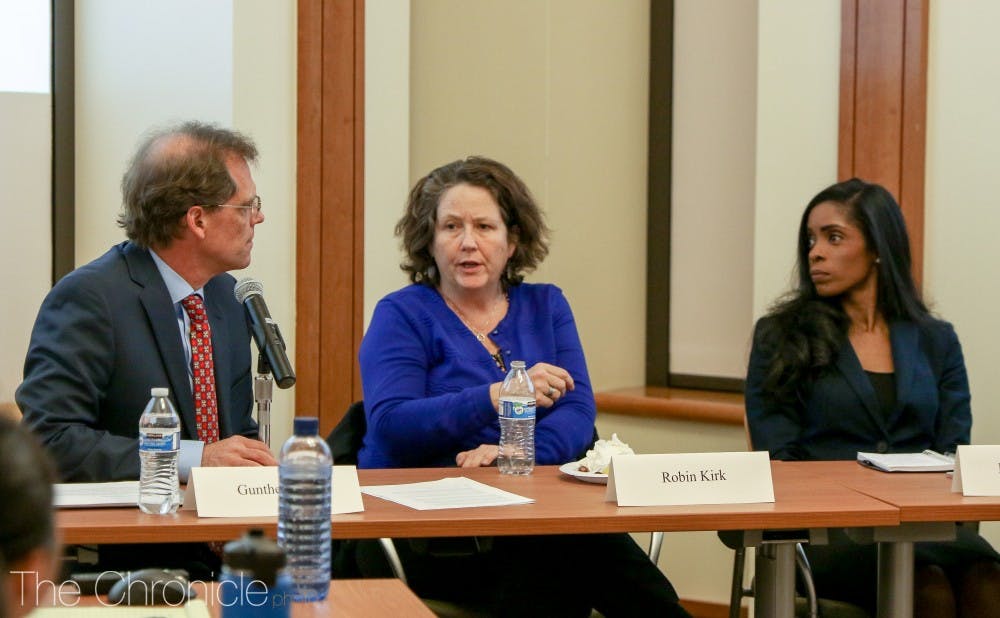How did a diverse committee come to consensus on a charged issue like the placement of a Confederate monument?
Conversation and listening were essential to building the consensus for the Durham City-County commission on Confederate Monuments and Memorials, committee members said at a Monday event.
After eight months of "engagement and research," the committee recently recommended that the now-crumpled statue of a Confederate soldier that was toppled in Durham in 2017 be displayed indoors while putting it in “accurate historical context.” The recommendation is now under review by local officials.
"When the statue was taken down, it was irreparably damaged,” the committee's report reads. “Nevertheless, the statue remains as much a historical artifact of these times as it is an artifact of the period when it was planned, erected and viewed. We believe that the statue should be displayed in its current condition so that the whole history of race relations and the fight for civil rights in Durham may in part be illuminated through this object.”
Members of the commission spoke at the Monday event entitled “Remembering White Supremacy” that was moderated by Gunther Peck, associate professor of history and director of the Hart Leadership Program.
Peck began the event by lamenting its name, since to remember implies that the event has passed. Peck believes that Americans haven’t put it in their nation’s past.
“White supremacy is an ongoing, breathing, challenge in the life of our nation,” Peck said.
Panel members included commission co-chairwoman Robin Kirk, faculty co-chair of the Duke Human Rights Center, co-chairwoman Charmaine McKissick-Melton, civil rights activist and associate professor of mass communication at North Carolina Central University, and Deondra Rose, commission member and assistant professor in the Sanford School of Public Policy.
“One of our tenets from the beginning was to make sure we got as many diverse voices into the process as possible,” McKissick-Melton said.
It wasn’t always as civil as they had hoped.
McKissick-Melton described a tense moment where a young white man walked into a meeting wearing a shirt with a Confederate flag. On the back it read "It’s not about racism, it’s about heritage." He reached into his pocket and she instantly felt fear. He didn’t pull out a weapon of any kind, but instead a base to stand a small Confederate flag. The committee members asked him to remove it. After coaxing and yelling and a visit from security, he put it away.
Despite moments like these, committee members maintained that emotions were an important part of the discussion.
“People came with an enormous amount of emotion that you couldn’t argue against with facts,” Kirk said.
Rose said that as someone who focuses on facts and logic, she found it difficult to think and talk about this topic without accidentally wandering into sensitive territory.
She also noted that the commission itself held diverse and even opposing views at times, but remained committed to supporting and protecting one another. It was by putting aside one’s views and listening to and respecting one another that they were able to reach consensus on the issue.
Editor's note: David Gregory of Sanford contacted The Chronicle after publication and identified himself as the man who brought a confederate flag into one of the meetings. He disputes that there was any yelling during the encounter or that he ever put his hand in his pocket, and he said that he had no weapon on him and that McKissick-Melton was the only member of the committee who asked him to remove it.
Get The Chronicle straight to your inbox
Signup for our weekly newsletter. Cancel at any time.

